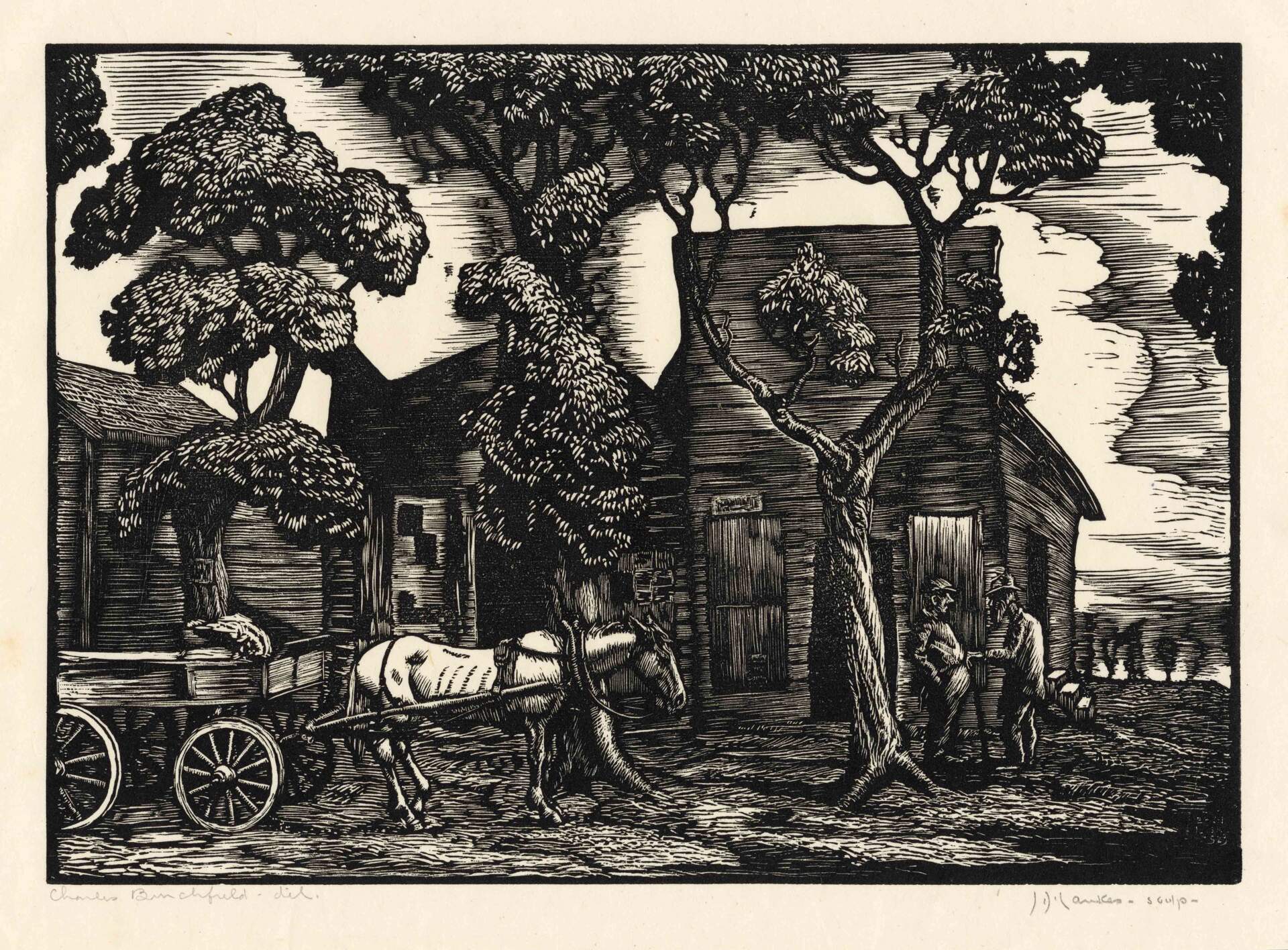Charles E. Burchfield (1893-1967)Carolina Village aka Winesburg
1923
wood engraving
7 3/16 x 10 3/16 inches (Frame: 11 3/8 x 14 3/8 inches)
Purchase, 1978
Burchfield recorded that this print was based on a 1918 watercolor made at Camden, S.C. while he was in the Army. A few copies of the prints, however, were orginally titled "Winesburg, Ohio" after the 1919 book of short stories by Sherwood Anderson that captures the desperation, pettiness, and tedium of small town American life. Although art critics in the 1920s had called him "the Sherwood Anderson artist" for his satirical works, Burchfield later denied that he hated or had meant to be critical of Salem and other Ohio communites. He may have changed the title to advert further critcism.
The subject of Carolina Village is related to The False Front (1920-21), a watercolor now in the collection of The Metropolian Museum of Art. Burchfield had gone to Negley, Ohio, sixteen miles southeast of Salem, on November 14, 1920 "to sketch the old dilapidated stores." He thought its old buildings had a "quaint romantic flavor" and the friendly inhabitants, whose conversations he overheard, charmed him. Both the painting and the print feature a false-front building, two older men in conversation, and a horse-drawn cart or carriage. It is possible that Burchfield wanted to retain the essance of the successful image in a print version after the painting had been bought by the museum in 1924.
